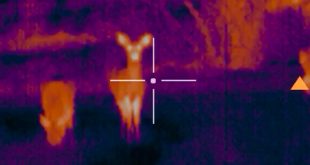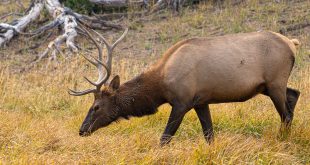
For more great content SUBSCRIBE to Eastmans’ Hunting Journals Here.
Opportunity is the name of the game out West and there’s no better critter for that than the pronghorn. With high populations, long seasons and plenty of tags to go around, it’s no wonder people from all over the country come out here to try their hand at chasing speed goats. But the devil is in the details. Pronghorns are the hardest animal to judge for trophy quality – period. If you are slightly off on the length or one mass measurement, what you thought was a book buck quickly fades right in front of your eyes. The upside though, comes back to opportunity. You get to look at a lot of bucks and that will quickly help you hone your field judging skills. To help shorten the curve and learn when the best time to start scouting is, we went back to the EHJ 144 DIY/Public Land issue and brought you Mike Eastman’s piece, “Antelope Horn Growth.” By developing a better understanding of how antelope horns grow you can maximize your limited scouting time and hopefully find yourself punching your tag on a trophy opening morning.
-Dan Turvey, Jr.
Antelope Horn Growth
“An American Original”
By Mike Eastman
Over the last two decades pre-scouting has become a normal practice when a hunter has finally snagged one of those hard-to-draw tags. They know that antlered big game will grow from the bottom up and by August they’ve completed their antler growth, unlike sheep that grow horns from day one until they pass away to the happy hunting grounds. So scouting for antlered game obviously should be done after the first of August. Horned big game on the other hand, with its continuous and slow horn growth can be scrutinized about anytime, even in the early summer.
What about the pronghorn? He has horns like sheep and goats. Unfortunately, this is where the similarities with other horned animals end. Those that do scouting in mid-summer will lose out on seeing the bucks’ total horn growth.
If you’re really going to take trophy hunting antelope seriously, you need to understand horn growth and when the different portions of the horn grow during the year. You see, the pronghorn have the strangest way of growing horns of any big game animal.
The common belief is that antelope horn is made up of hair. This fallacy is built on the noticeable presence of hair at the base of the horn. In Pronghorn Ecology and Management, a book by O’Gara and Yoakum, they state that the horn is not matted hair. By the way, this book is the bible on antelope. It was written in 2004 and is extremely comprehensive. Anyway, hair does grow under the base of the horn, but it isn’t part of the horn. The horn is made up of a substance that is a close cousin to your fingernail.
Getting back to horn growth, a buck will pull off his sheaths in mid-November, exposing next year’s barely started horn growth on his hard, boney core. I’ve always wondered how a buck’s horns grow through the winter and summer. Logic would say that they start at the bottom like sheep and grow upward as the spring and summer wears on. Not so! Pronghorn Ecology and Management outlines it quite well. It cites studies showing a different growth pattern for the pronghorn’s horn. During the fall rut, a new horn starts to grow under the outer shell. This is triggered by the high testicular development in bucks during the rut.
Phase One – Horn Growth
By the time October rolls around, the buck has a start on the upper portion of the horn under the exiting horn sheath. It’s critical after the rut for the bucks to have access to good range and mild weather to rebound from the strenuous rut before winter sets in. Then mid-November triggers the slipping off of the old horn shell, exposing the new horn growth. By the end of March or mid-April, the upper part that includes the prong and curled tip is grown. That’s right; the upper part of the horn prong and the curl is done before winter is even over. So you can conclude a trophy buck needs a somewhat mild winter with plenty of feed. By May his upper horn length, which includes the prong and curl have been fully developed.
Phase Two – Horn Growth
In mid-May through July he really puts on horn length and mass below the prong. That includes mass around his bases. Sometimes you find bucks that have smaller bases then the second circumference, which is usually just below the prong. This growth pattern can happen if the spring is dry and vegetation is short. However, if by mid-June the rains come with equally heavy vegetation growth, then horn length and heavy circumferences below the prong will develop. The mass and horn growth below the prong continues until about the 1st of August. Looking at this, it’s important that the summer months of June and July have good moisture and in turn available new growth vegetation for heavy and long horn growth. After sometime in the first part of August the horn will harden up for the coming rut.
Armed with this information, we can now understand that for a buck to have long prong length and heavy circumferences above the prong, he needs to have a good winter and groceries. If the winter is bad and he’s under stress, the prong length and heavy circumferences above the prong won’t be there. This upper portion of a buck’s horn, the prong, the length above prong and circumferences above prong, has the ability to separate the B&C bucks from those that are just a trophy.
If you’re doing any scouting, the opportune time for sizing up what a buck has for horn is anytime after the first of August. Sometimes, you might not be able to scout in August. If you’re doing some preseason looking in July, just remember the bucks still have some horn growth in length and mass below the prong coming, but the prong length and horn length and mass above the prong is a done deal.
An interesting study in Montana on horn growth compared to the age of bucks came up with some conclusions. Again, in Pronghorn Ecology and Management by O’Gara and Yoakum, they have a table from this study showing that some younger bucks had longer horns. This would go against common thinking that the older, mature males have larger horns. However, this study was only done in Montana and I don’t think it was really a good representation of age to horn size of pronghorn throughout the western states. I would like to see a study done in several states that are known for trophy bucks. Wyoming, New Mexico, Nevada and Arizona come to mind. Any conclusions until this is done can only be looked at with some skepticism.
Finally, I believe when it comes to horn growth of antelope bucks they not only need country with excellent feed but in the northwestern states, having good winters and above-average rain and vegetation. This is the key to exceptional horn growth of trophy bucks.
I believe that doing pre-scouting in late July and early August will produce the best results in finding a trophy buck antelope. As you can see, these little animals are quite different in headgear growth than any other big game in the world. It’s like I wrote in my book Hunting Trophy Antelope, “Pronghorn – an American Original.”
 Eastmans' Official Blog | Mule Deer, Antelope, Elk Hunting and Bowhunting Magazine | Eastmans' Hunting Journals
Eastmans' Official Blog | Mule Deer, Antelope, Elk Hunting and Bowhunting Magazine | Eastmans' Hunting Journals





I think bear skulls are harder to judge as well as mountain goat horns. But that is just my opinion.
Very true! It does take a lot of experience to judge antelope well though.